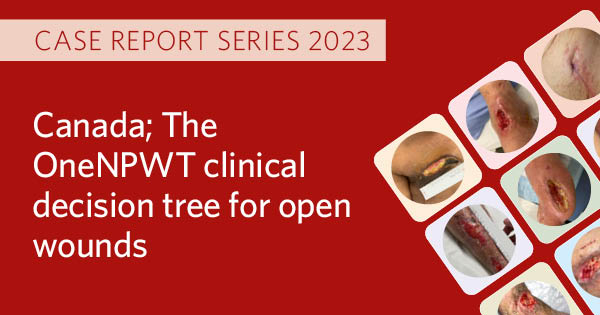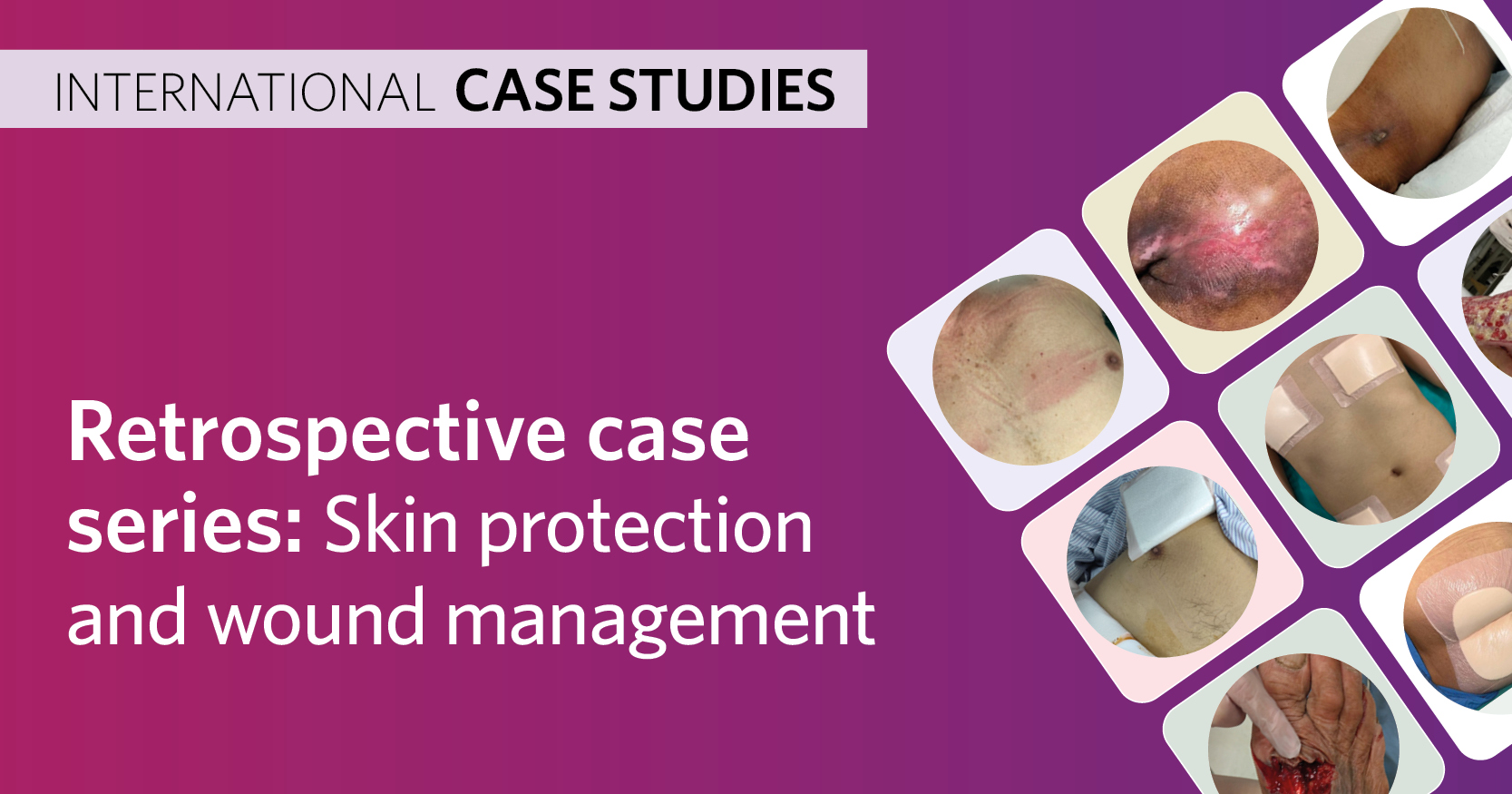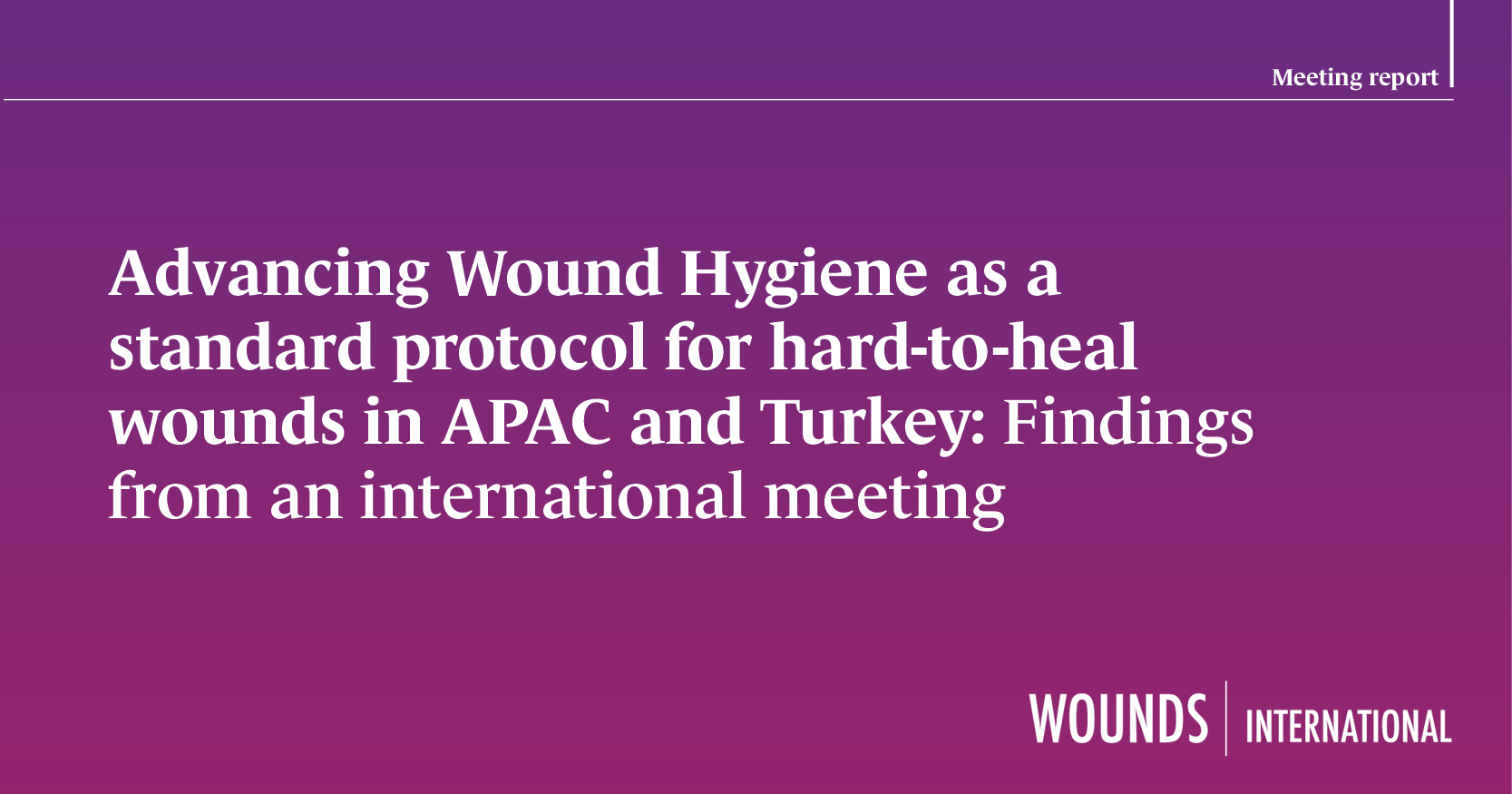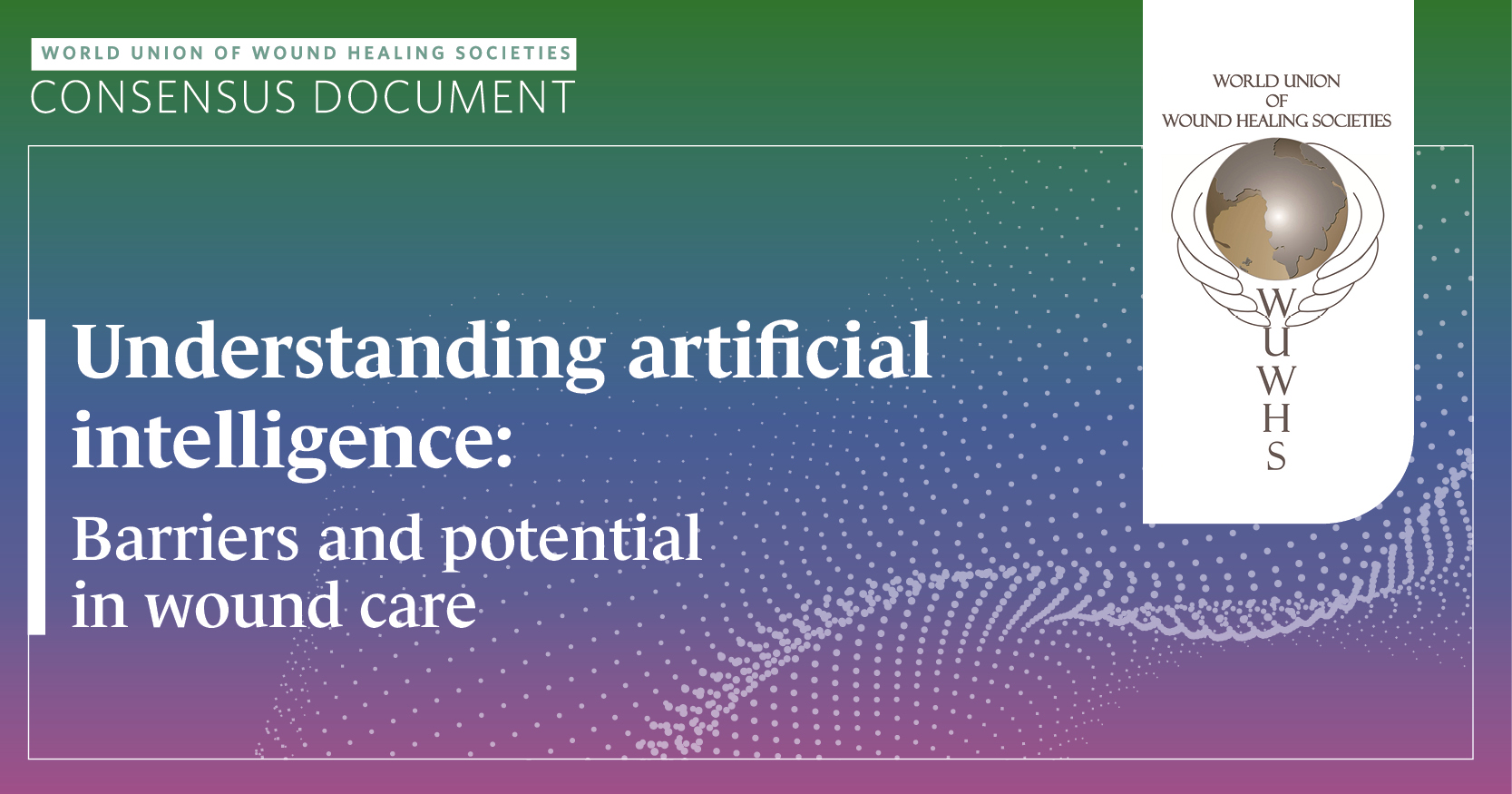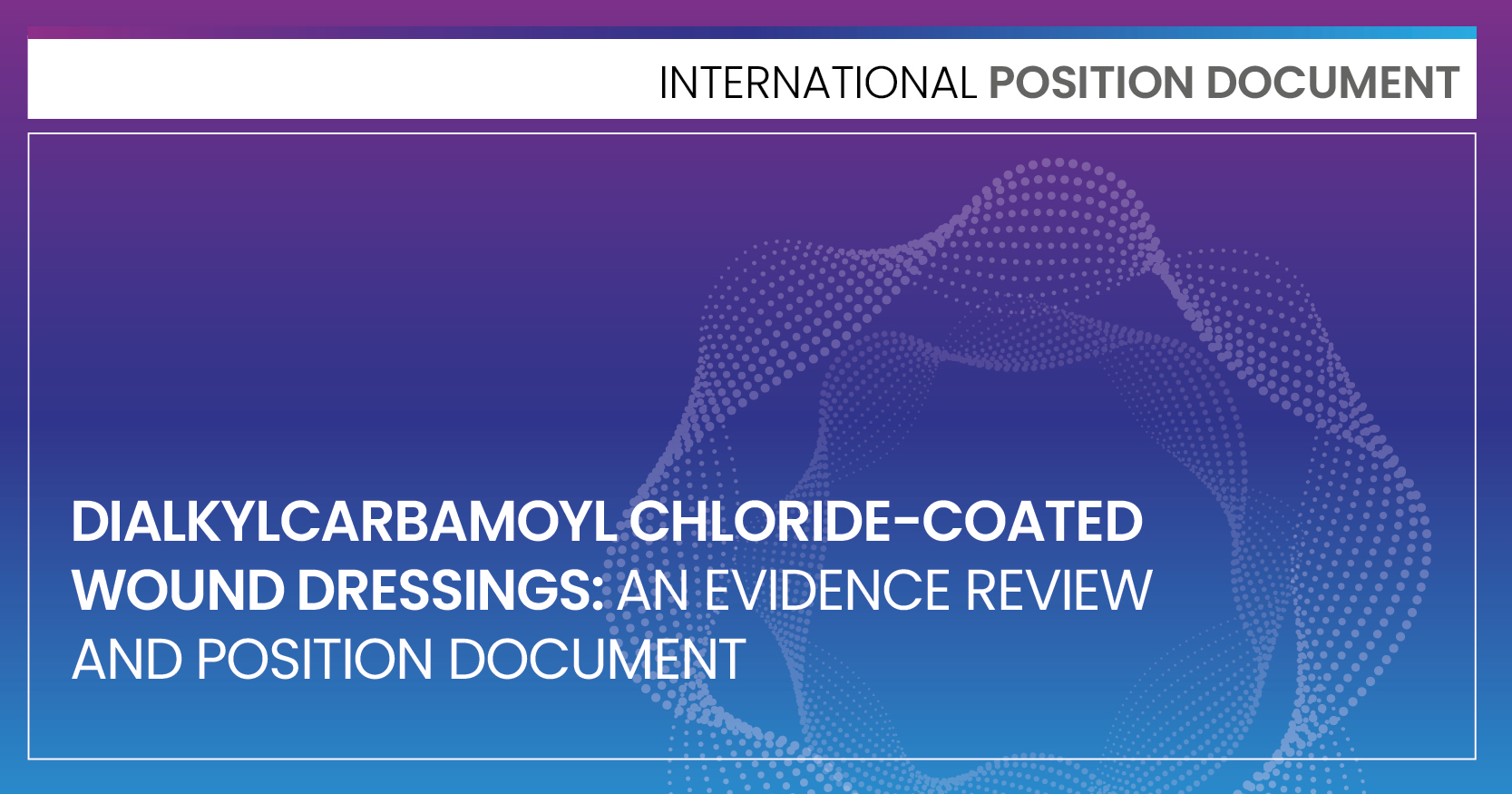ReferencesApelqvist J, Willy C, Fagerdahl AM et al (2017) EWMA Document: Negative Pressure Wound Therapy. J Wound Care 26: S1-S154
Banasiewicz T, Banky B, Karsenti A et al (2019) Traditional and single-use NPWT: when to use and how to decide on the appropriate use? Recommendations of an expert panel. Wounds International
Bates-Jensen BM (2001) Bates-Jensen wound assessment tool. Instructions for use. Available at: https://www.southwesthealthline.ca/healthlibrary_docs/B.6.1b.Bates-JensenTool.pdf (accessed 31.01.2023)
Brownhill R (2019) PICO Biomechanical Study. Data on file report DS/19/211/R
Brownhill VR, Huddleston E, Bell A (2021) Pre-Clinical Assessment of Single-Use Negative Pressure Wound Therapy During In Vivo Porcine Wound Healing. Adv Wound Care (New Rochelle) 10(7): 345-56
Casey C (2019) Consistent delivery of therapeutic negative pressure levels by a single use negative pressure wound therapy system (sNPWT)* in a wound model. Paper presented at: EWMA; Gothenburg, Sweden
Cray A (2017) Negative pressure wound therapy and nurse education. Br J Nurs 26(15): S6-S18
Dowsett C, Hampton K, Myers D, Styche T (2017) Use of PICO to improve clinical and economic outcomes in hard-to-heal wounds. Wounds International 8(2): 52-8
Edwards D, Bourke N, Murdoch J, Verma S (2018) Using portable, single-use, canister-free, negative-pressure wound therapy for plastic surgery wounds. Wounds UK 14(3)
Forlee M, Richardson J, Rossington A et al (2016) An interim analysis of device functionality and usability of RENASYS™ TOUCH – a new portable Negative Pressure Wound Therapy (NPWT) system. Paper presented at: Wounds UK; Harrogate, UK
Forlee M, van Zyl L, Louw V et al (2018) A randomised controlled trial to compare the clinical efficacy and acceptability of adjustable intermittent and continuous Negative Pressure Wound Therapy (NPWT) in a new portable NPWT system. Paper presented at: EWMA; Krakow, Poland
Fraccalvieri M, Fierro MT, Salomone M et al (2012) Gauze-based negative pressure wound therapy: a valid method to manage pyoderma gangrenosum. International Wound Journal 11: 164-68
Gilchrist B, Robinson M, Jaimes H (2020) Performance, safety, and efficacy of a single use negative pressure wound therapy system for surgically closed incision sites and skin grafts: A prospective multi-centre follow-up study. Paper presented at: SAWC; Virtual
Guest JF, Fuller GW, Vowden P (2020) Cohort study evaluating the burden of wounds to the UK’s National Health Service in 2017/2018: update from 2012/2013. BMJ Open 10(12): e045253
Hampton J (2015) Providing cost-effective treatment of hard-to-heal wounds in the community through use of NPWT. Community Wound Care S14-S20
Hopkins RB, Burke N, Harlock J et al (2015) Economic burden of illness associated with diabetic foot ulcers in Canada. BMC Health Services Research 13: 1-9
Hudson DA, Adams KG, Van Huyssteen A et al (2015) Simplified negative pressure wound therapy: clinical evaluation of an ultraportable, no-canister system. Int Wound J 12(2): 195–201
Hurd T, Trueman P, Rossington A (2014) Use of a Portable, Single-use Negative Pressure Wound Therapy Device in Home Care Patients with Low to Moderately Exuding Wounds: A Case Series. Ostomy Wound Management 60(3): 30-6
Hurd T, Chadwick P, Cote J, Cockwill J, Mole T, Smith J (2010) Impact of gauze-based NPWT on the patient and nursing experience in the treatment of challenging wounds. Int Wound J 7(6): 448-55
Hurd T, Kirsner RS, Sancho-Insenser JJ et al (2021) International Consensus Panel Recommendations for the Optimization of Traditional and Single-Use Negative Pressure Wound Therapy in the Treatment of Acute and Chronic Wounds. Wounds 33(2): S1-S11
Janssen AHJ, Wegdam JA, de Vries Reilingh TS et al (2021) Which determinants are considered to be important for adherence to Negative Pressure Wound Therapy: A multimethods study. J Tissue Viability 30(2): 250-255
Johnson S (2008) V1STAR – A new option in Negative Pressure Therapy. Journal of Wound Technology 1: 30-31
Karlakki SL, Hamad AK, Whittall C et al (2016) Incisional negative pressure wound therapy dressings (iNPWTd) in routine primary hip and knee arthroplasties: A randomised controlled trial. Bone Joint Res 5(8): 328-37
Kirsner R, Dove C, Reyzelman A et al (2019) A Prospective, Randomised, Controlled Clinical Trial on the Efficacy of a single-use Negative Pressure Wound Therapy System, compared to Traditional Negative Pressure Wound Therapy in the Treatment of Chronic Ulcers of the Lower Extremities. Wound Repair Regen 27(5): 519–529
Kirsner RS, Delhougne G, Searle RJ (2020) A cost-effectiveness analysis comparing single-use and traditional negative pressure wound therapy to treat chronic venous and diabetic foot ulcers. Wound Manag Prev 66(3): 30–38
Kirsner RS, Hurd T (2020) Assessing the Need for Negative Pressure Wound Therapy Utilization Guidelines: An Overview of the Challenges With Providing Optimal Care. Wounds 32(12): 328-33
O’leary DP, Peirce C, Anglim B et al (2017) Prophylactic Negative Pressure Dressing Use in Closed Laparotomy Wounds Following Abdominal Operations: A Randomized, Controlled, Open-label Trial: The P.I.C.O. Trial. Ann Surg 265(6): 1082-6
Seidel D, Diedrich S, Herrle F et al (2020) Negative Pressure Wound Therapy vs Conventional Wound Treatment in Subcutaneous Abdominal Wound Healing Impairment: The SAWHI Randomized Clinical Trial. JAMA Surg 155(6): 469-78
Selvaggi F, Pellino G, Sciaudone G et al (2014) New Advances in Negative Pressure Wound Therapy (NPWT) for Surgical Wounds of Patients Affected with Chron’s Disease. Surgical Technology International 24: 83-9
Sen CK, Gordillo GM, Roy S et al (2009) Human skin wounds: a major and snowballing threat to public health and the economy. Wound Repair Regen 17(6): 763-71
Sen CK (2019) Human Wounds and Its Burden: An Updated Compendium of Estimates. Adv Wound Care (New Rochelle) 8(2): 39-48
Smith+Nephew (2018a) Summary of routine QA testing on MVP of PICO dressings. Internal Report. DS/18/153/R
Smith+Nephew (2018b) PICO 7Y – Waterproofness of dressings. Internal Report. DS/18/134/R
Smith+Nephew (2018c) PICO 14 Pump weight and dimensions. Internal Report. RD/18/137
Smith+Nephew (2018d) Kendal PICO 7Y – pump weight and dimensions. Internal Report. DS.18.066.R
Smith+Nephew (2019a) PICO Biomechanical Study. Internal Report. DS/19/211/R
Smith+Nephew (2019b) Use of Moisture Vapour Permeability* (MVP) and Moisture Vapour Transmission rate** (MVTR) data to support product claims referring to moist wound healing. Internal Report
Smith+Nephew (2020) Bacterial barrier testing of the PICO Dressing. Internal Report. 2001002
Smith+Nephew (2021) PICO™ Pressure Mapping Study. Internal Report
Tanaydin V, Beugels J, Andriessen A et al (2018) Randomized Controlled Study Comparing Disposable Negative-Pressure Wound Therapy with Standard Care in Bilateral Breast Reduction Mammoplasty Evaluating Surgical Site Complications and Scar Quality. Aesthetic Plast Surg 42(4): 927-35
Wounds International (2023) Europe, the Middle East and Africa: The OneNPWT clinical decision tree for open wounds. Wounds International
World Union of Wound Healing Societies (WUWHS; 2019) Wound exudate: effective assessment and management Wounds International
World Union of Wound Healing Societies (2020) Optimising wound care through patient engagement. Wounds International

